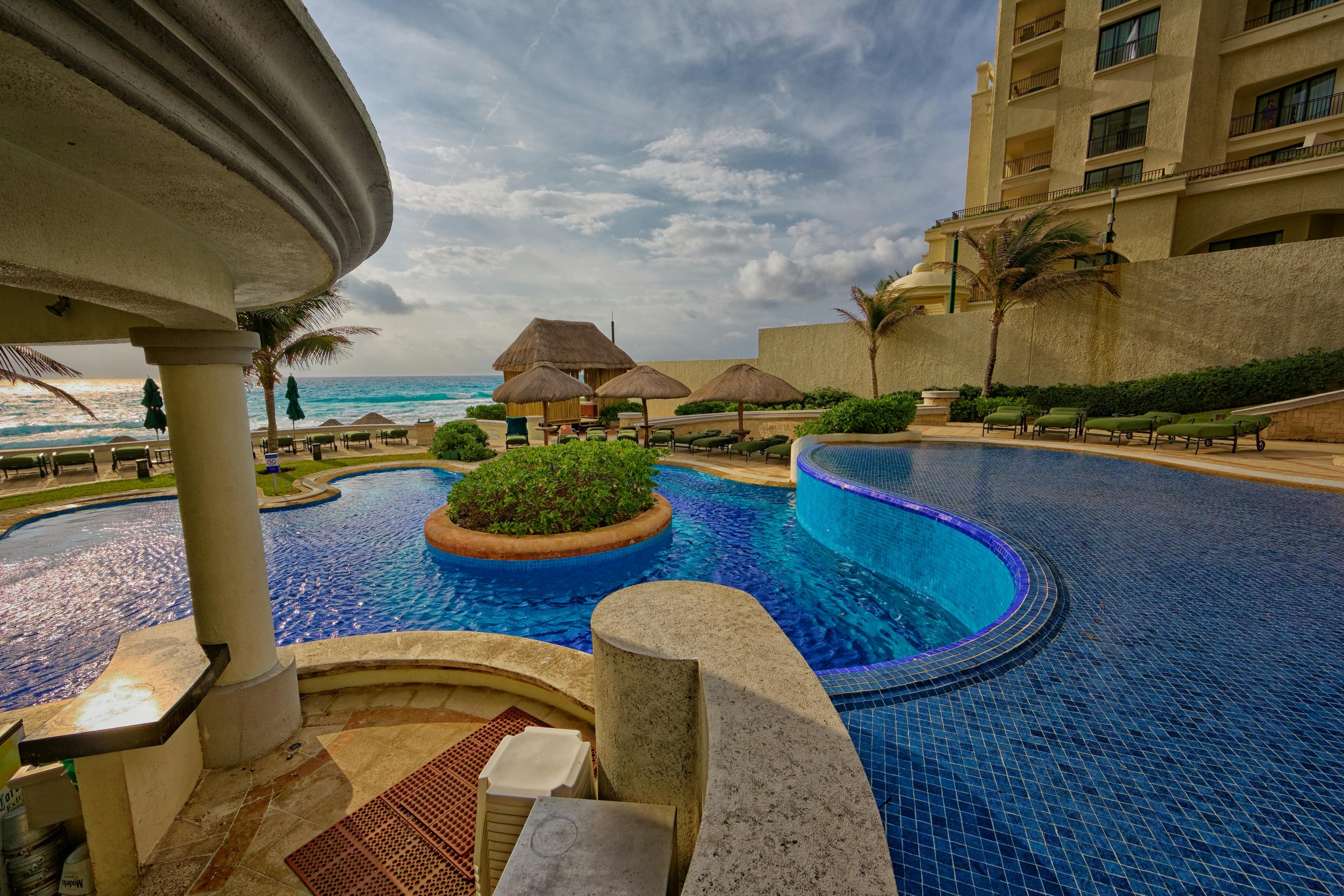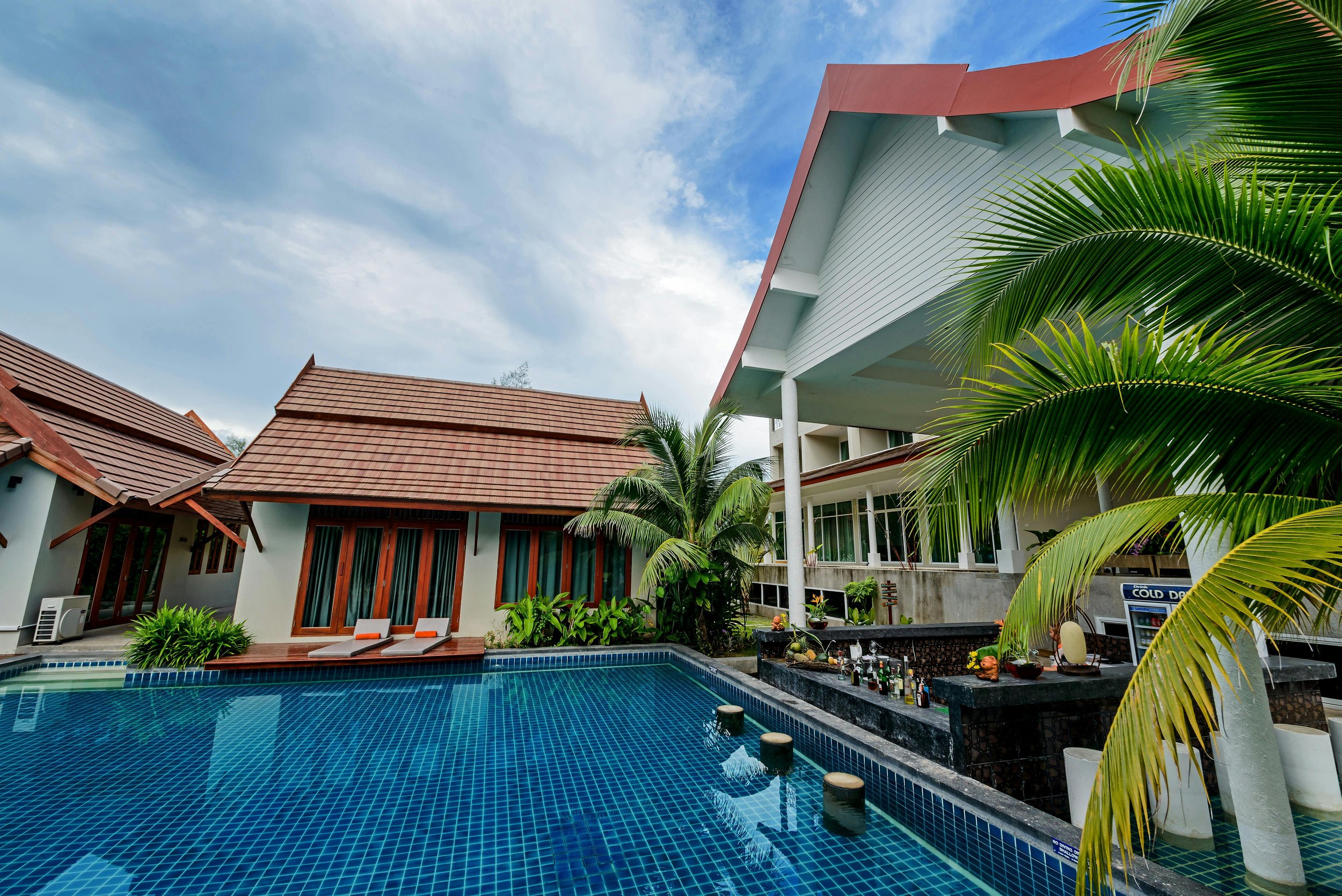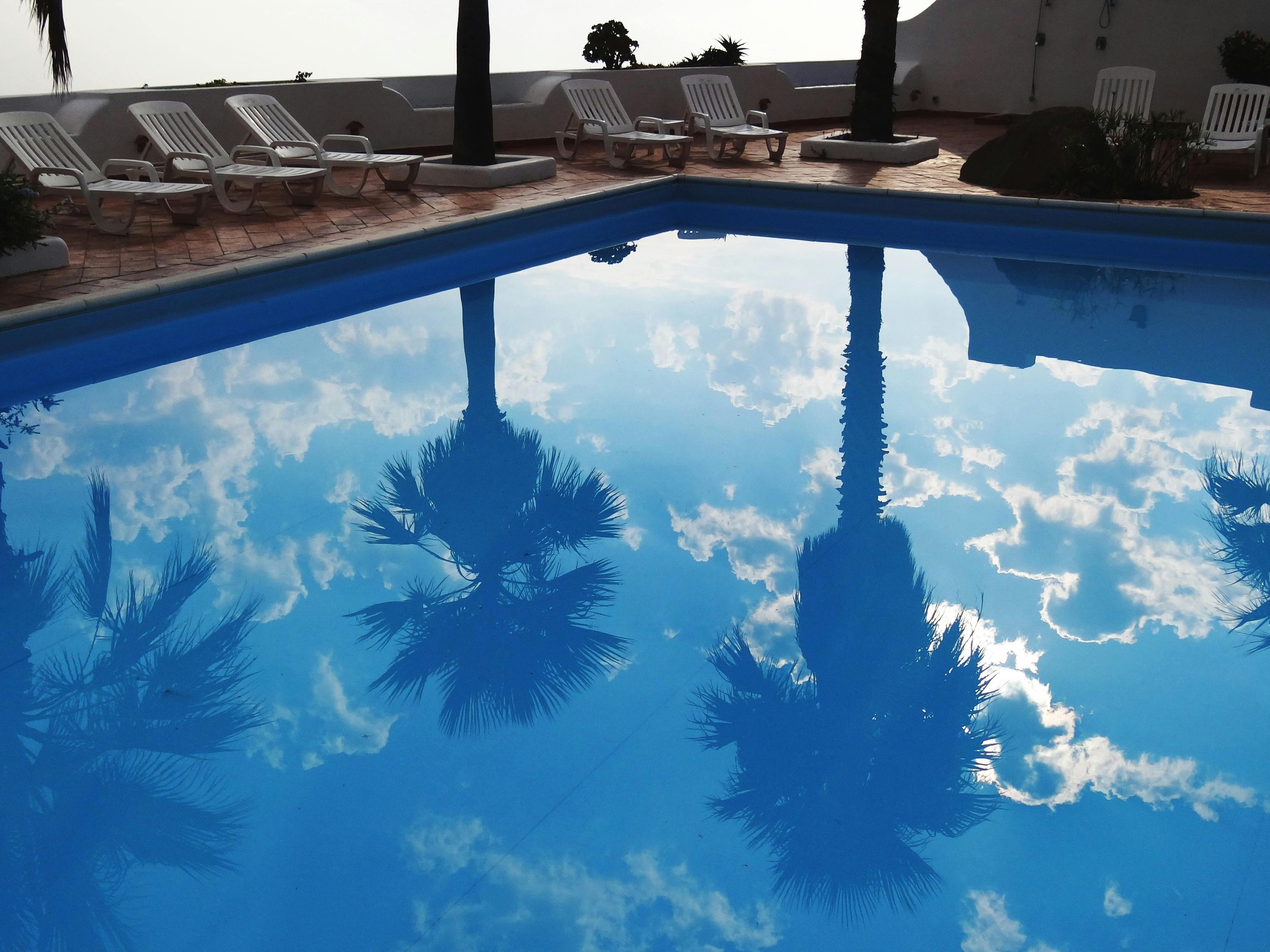Why Is My Pool Cloudy? Troubleshooting Tips
Discover the top reasons why your pool might be cloudy and learn practical troubleshooting tips to restore crystal clear water. Dive into expert advice and easy-to-follow solutions!
There's nothing quite like diving into a refreshing, crystal-clear pool on a hot day. But what do you do when that inviting blue water turns murky and cloudy? Suddenly, your backyard oasis feels more like a mystery than a retreat. So, why is my pool cloudy? Troubleshooting tips are essential to get to the bottom of this murky issue and bring back the sparkle to your swimming spot.
In this comprehensive guide, we'll dive deep into the common causes of cloudy pool water, offer practical solutions, and share tips to keep your pool pristine. Whether you're a seasoned pool owner or a newbie just getting your feet wet, these insights will help you troubleshoot and fix the problem in no time.
What Causes Cloudy Pool Water?
Before we dive into the troubleshooting tips, let's first understand the common culprits behind cloudy pool water. The reasons can vary, from chemical imbalances to environmental factors. Here are some of the usual suspects:
Chemical Imbalances
Low Chlorine Levels: Chlorine is your pool's best friend when it comes to keeping water clear and clean. Without enough chlorine, algae and bacteria can thrive, making the water cloudy.
High pH Levels: If the pH level of your pool water is too high, it can lead to calcium scaling, which causes the water to become cloudy.
High Total Alkalinity (TA): Just like high pH, elevated TA can cause calcium carbonate to precipitate, making the water look murky.
Environmental Factors
Debris and Dirt: Leaves, grass, and other debris can introduce organic matter into your pool, leading to cloudy water if not properly filtered out.
Rainwater: After a heavy rain, your pool's water chemistry can be thrown off balance, leading to cloudiness.
Pollen and Dust: These tiny particles can accumulate over time, especially if your pool is uncovered, making the water appear less clear.
Equipment Issues
Dirty or Old Filter: A filter that's clogged or past its prime can't do its job effectively, allowing particles to stay in the water.
Improper Circulation: Poor water circulation can result in dead spots where debris and algae can accumulate, leading to cloudy water.
Troubleshooting Tips for Cloudy Pool Water
1. Test and Balance Your Water Chemistry
Chlorine Levels
Optimal Range:
Free Chlorine: To maintain a safe and clean swimming environment, ensure your pool's free chlorine levels are between 1-3 parts per million (ppm). Free chlorine is the amount of chlorine available to sanitize and kill harmful microorganisms, including bacteria and algae.
Importance: Maintaining the correct chlorine levels prevents the growth of harmful pathogens and algae, which can cause the water to become cloudy and unsafe for swimmers. Regular testing and adjustment are necessary, especially after heavy pool use, rain, or hot weather, all of which can deplete chlorine levels.
pH Levels
Ideal pH Range:
Balanced Water: Aim for a pH level between 7.2 and 7.6. This range is slightly basic and is considered ideal for pool water as it maximizes chlorine's effectiveness while minimizing irritation to swimmers' eyes and skin.
Effects of Imbalance: If the pH is too low (acidic), it can cause corrosion of pool equipment and surfaces, and if too high (basic), it can lead to scaling and reduce chlorine efficacy. Regular monitoring and adjustment are crucial to maintaining a balanced pH and ensuring comfortable swimming conditions.
Total Alkalinity (TA)
Buffer for pH Stability:
Recommended Levels: Keep the total alkalinity between 80-120 ppm. Total alkalinity acts as a buffer for pH, helping to stabilize it and prevent rapid fluctuations that can lead to corrosion or scaling.
Balance and Protection: Proper TA levels protect pool surfaces and equipment from damage due to sudden changes in pH. If TA is too low, the pH can become erratic;
2. Shock Your Pool
Calculate the Amount of Shock Needed
Determine Dosage:
Product Instructions: Always start by reading the instructions provided on your pool shock product. The typical dosage recommendation is 1 pound of shock per 10,000 gallons of pool water, but this can vary based on the product's concentration and the severity of the water's condition.
Pool Volume Calculation: If you're unsure of your pool's volume, calculate it by multiplying the length, width, average depth, and then multiplying by 7.5 for rectangular pools (or by 5.9 for oval/round pools) to get the volume in gallons. Knowing the precise volume is crucial for accurate dosing, ensuring effective treatment without overuse.
Dissolve Shock in Water
Pre-Dissolution Process:
Bucket Method: Before adding the shock to the pool, it's advisable to dissolve the shock granules in a bucket of water. This step helps prevent the shock from settling on the pool floor and potentially bleaching the liner or damaging pool surfaces.
Mixing the Solution: Fill a clean bucket with water and slowly add the shock while stirring. Ensure that the shock is fully dissolved before proceeding to the next step. Using lukewarm water can help the granules dissolve more easily, but always handle with care to avoid splashes.
Distribute Evenly
Proper Application:
Pouring Technique: With the pump running, slowly pour the shock solution around the perimeter of the pool. This method ensures an even distribution of the chemicals and maximizes the shock's effectiveness. Focus on areas with poor circulation, such as corners, steps, and along the walls, where algae and bacteria are more likely to accumulate.
Avoid Concentration: Avoid pouring the shock solution in one spot, as this can lead to localized bleaching or damage. Distributing the solution evenly helps prevent any adverse effects on the pool liner or plaster, maintaining the pool's aesthetics and integrity.
3. Clean and Maintain Your Filter
Essential Filter Maintenance for Clear Pool Water
Backwash Sand or DE Filters
Purpose of Backwashing:
Debris Removal: Backwashing is a crucial maintenance step for sand and diatomaceous earth (DE) filters. It involves reversing the flow of water through the filter to flush out trapped debris, dirt, and contaminants. This process helps maintain the filter's efficiency and prevents clogging, which can lead to reduced water flow and cloudy pool water.
Frequency: The frequency of backwashing depends on the filter's usage and the pool's environment. Generally, it's recommended to backwash your filter once the pressure gauge indicates a 7-10 psi increase from the normal operating pressure, or at least once every few weeks during peak swimming season.
Clean Cartridge Filters
Effective Cleaning:
Rinse with Water: Cartridge filters require regular cleaning to maintain their efficiency. Remove the cartridge from the filter housing and rinse it thoroughly with a garden hose to remove surface debris and dirt. Ensure you rinse between the pleats to dislodge trapped particles.
Use a Filter Cleaner: For a more thorough cleaning, use a specially formulated filter cleaner. This helps break down oils, lotions, and fine particles that water alone can't remove. Soak the cartridge in the cleaner according to the manufacturer's instructions, then rinse thoroughly to ensure all residues are removed.
Inspect for Damage
Regular Inspections:
Check for Wear and Tear: Regularly inspect all types of pool filters—sand, DE, or cartridge—for signs of wear and tear. Look for cracks, tears, or signs of degradation in the filter media. Damaged filters can allow debris to pass through, reducing the pool's water quality and clarity.
Replace Parts as Needed: If you notice any damage or significant wear, replace the affected parts immediately. For sand filters, this may mean replacing the sand every 3-5 years. For DE filters, ensure the grids are intact and replace them if they show signs of wear. Cartridge filters should be replaced as recommended by the manufacturer, typically every 1-2 years, depending on use.
4. Improve Water Circulation
Run the Pump Longer
Optimal Pump Operation:
Daily Run Time: To maintain clear and clean pool water, it's essential to run your pool pump for at least 8 hours a day during the swimming season. This duration allows the water to circulate through the filtration system multiple times, effectively removing debris, contaminants, and microorganisms.
Seasonal Adjustments: During periods of heavy use or extreme weather conditions, such as high temperatures or heavy rainfall, consider increasing the pump's run time. This adjustment helps maintain water clarity and chemical balance, preventing issues like cloudy water or algae growth.
Adjust Return Jets
Improving Water Flow:
Circular Water Movement: Properly adjusted return jets can significantly enhance water circulation. Point the jets in a slightly downward and circular pattern to promote consistent water flow throughout the pool. This setup helps distribute chemicals evenly and prevents stagnant areas where debris and algae can accumulate.
Preventing Dead Spots: By adjusting the return jets to create a circular motion, you reduce the likelihood of dead spots—areas with poor circulation. Dead spots are prone to algae growth and can affect overall water quality. Regularly check and adjust the jets to maintain optimal flow and water movement.
Brush the Pool
Algae and Debris Prevention:
Routine Brushing: Regularly brushing the pool walls and floor is a crucial maintenance step. Brushing helps remove algae spores, dirt, and other particles that can adhere to the pool surfaces. This practice prevents the buildup of biofilm, which can protect algae and bacteria from the effects of sanitizers.
Comprehensive Cleaning: Use a pool brush with appropriate bristle strength for your pool surface—nylon for vinyl or fiberglass, and stainless steel for concrete or plaster. Brush all areas of the pool, including steps, corners, and behind ladders, where algae can often take hold. Regular brushing, combined with proper chemical balance and filtration, ensures a clean and safe swimming environment.
5. Remove Debris and Vacuum
Vacuuming Tips:
Targeted Cleaning:
Spot Cleaning: A manual vacuum is an excellent tool for spot cleaning areas of your pool that require extra attention. It's particularly effective for removing debris, dirt, and algae that may accumulate in corners, along walls, and on the pool floor. Manual vacuums allow you to target specific areas that automated systems might miss, ensuring a thorough clean.
Cost-Effective: Manual vacuums are often more affordable than their automated counterparts, making them a cost-effective choice for pool owners. They are simple to use and can be attached to your pool's filtration system, utilizing the pump's suction to remove contaminants.
Automatic Pool Cleaner
Convenient Maintenance:
Hands-Off Cleaning: For a more hands-off approach, investing in an automatic pool cleaner, such as a robotic cleaner, can be a game-changer. These devices are designed to move independently around your pool, cleaning surfaces and collecting debris. They are equipped with brushes and vacuum systems that scrub the pool walls and floor while filtering out dirt and particles.
Efficiency and Coverage: Robotic pool cleaners are highly efficient, often covering the entire pool area, including hard-to-reach spots. They can operate independently of your pool's filtration system, which reduces wear and tear on your equipment and can lead to energy savings. Many models come with programmable settings, allowing you to schedule cleaning cycles according to your needs.
Choosing the Right Cleaner:
Pool Size and Type: When selecting an automatic pool cleaner, consider the size and type of your pool. Some cleaners are better suited for larger pools, while others excel in smaller or uniquely shaped pools. Additionally, certain cleaners are designed specifically for different pool surfaces, such as vinyl, fiberglass, or concrete.
Maintenance and Upkeep: While robotic cleaners require minimal supervision, they do need regular maintenance to perform optimally. This includes emptying debris bags or cartridges, checking for wear on brushes and tracks, and ensuring the cleaner's sensors and motors are functioning correctly.
Conclusion
Keeping your pool water clear and inviting doesn't have to be a chore. By understanding the common causes of cloudiness and following these troubleshooting tips, you can enjoy crystal-clear water all season long. Remember, regular maintenance is key to preventing cloudy water. So, why is my pool cloudy? Troubleshooting tips like these will help you keep your pool in top shape, ensuring safe and enjoyable swimming for everyone.
Dive into a sparkling clean pool and leave the cloudiness behind!
Frequently Asked Questions
Q: How long does it take for pool water to clear after shocking?
A: It usually takes 24-48 hours for the water to clear after shocking, depending on the severity of the cloudiness and the efficiency of your filtration system.
Q: Can cloudy pool water be harmful?
A: Yes, cloudy water can harbor harmful bacteria and algae, posing health risks to swimmers. It's important to address the issue promptly.
Q: How often should I test my pool water?
A: During the swimming season, test your water at least twice a week. After heavy rain or a pool party, it's a good idea to test and adjust as needed.
Q: Can I swim in a cloudy pool?
A: It's best to avoid swimming in cloudy water until the issue is resolved. Cloudy water can indicate low chlorine levels or other chemical imbalances that may be unsafe.





